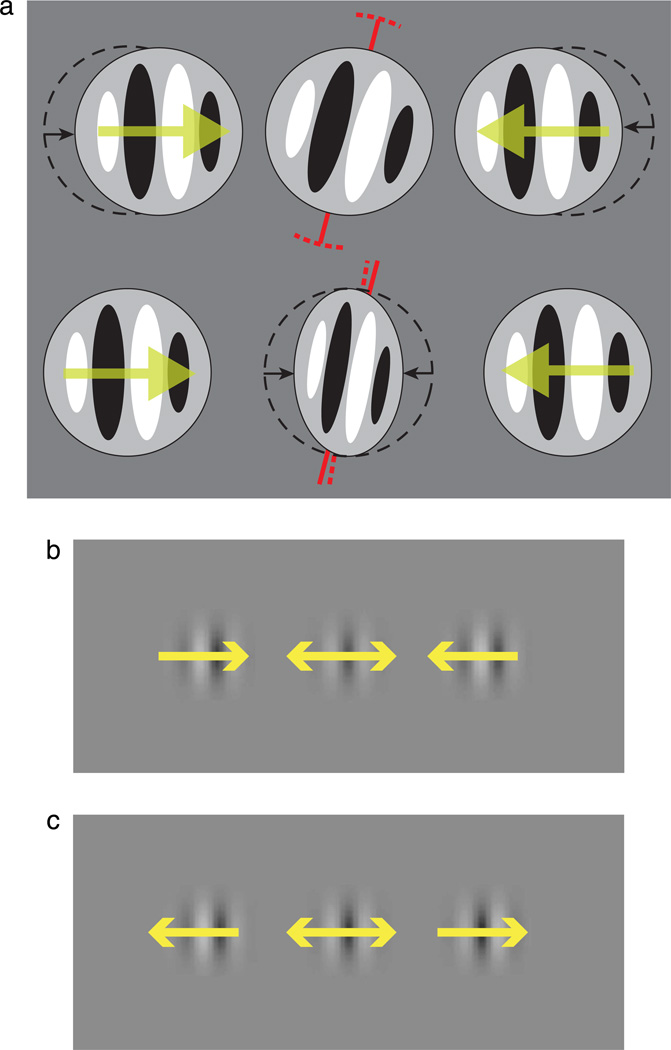Figure 4.
(a) Two possible mechanisms by which inward-drifting flankers could elevate orientation discrimination thresholds: (upper) position offset or (lower) contraction of space at the target location. The former predicts an increase in spatial frequency discrimination thresholds due to the closer perceived position of the flankers, without an effect on the mean perceived spatial frequency. The latter predicts an increase in perceived spatial frequency at the target location without a necessary increase in threshold elevation. (b, c) Similar to Figures 1c and 1d except now the stimulus changes not its orientation but its spatial frequency.

